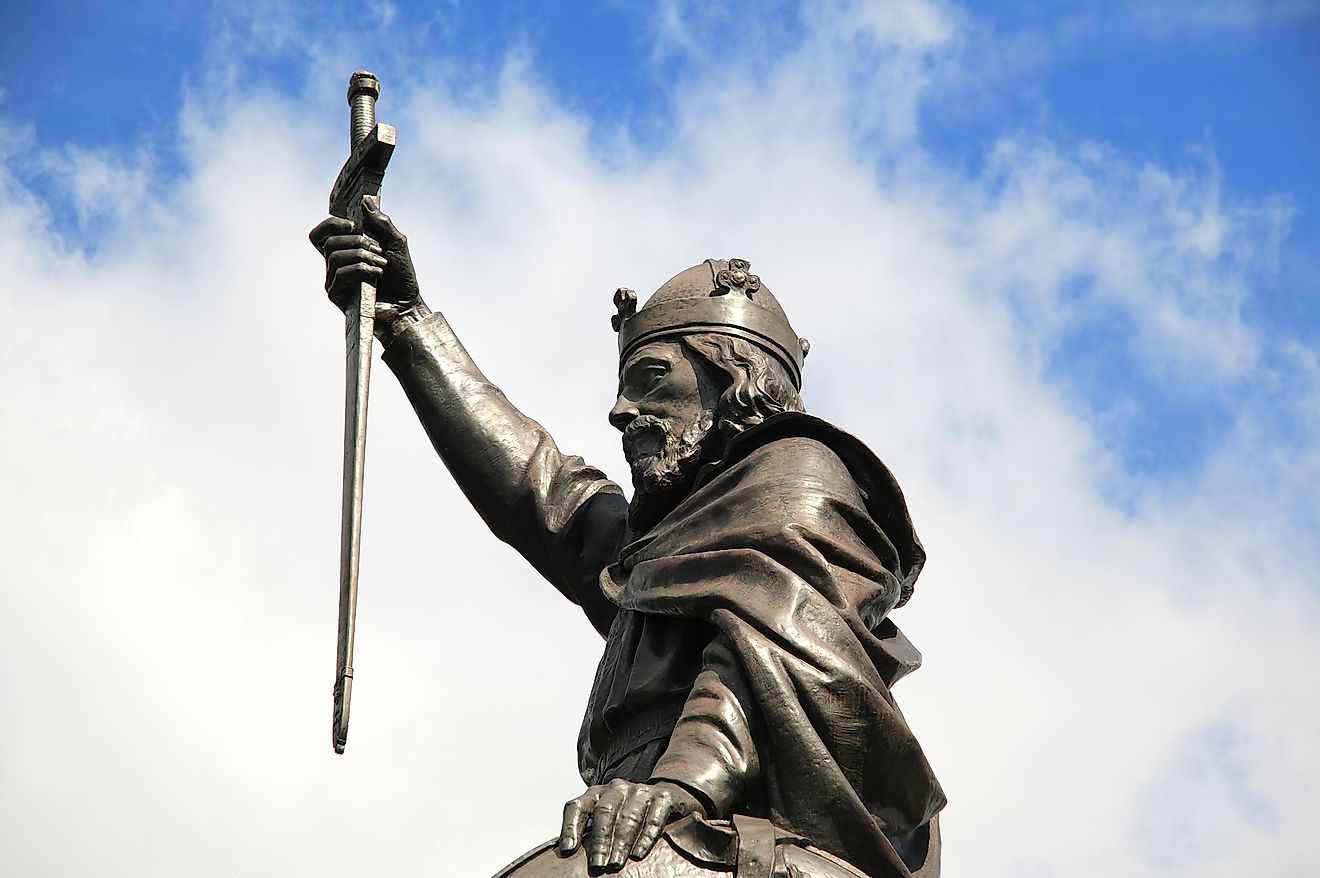Alfred the Great Biography

King Alfred is perhaps one of the most famous rulers in British history. Known as the King Alfred the Great, he ruled Wessex from 871 to 899. He was the first ever ruler to appoint himself as the king of all the Anglo-Saxon people, which provided him with everlasting glory. However, not only was he bold and ambitious, Alfred placed much importance to the issues of education and religion. He was so impressive, in fact, that a scholar in the 10th century, named Asser, wrote his biography from which we now know most of the historical information about him.
Early Life
Born in 849. Alfred was the youngest of five sons of the King Æthelwulf, the ruler of the southern region of the River Thames. No one really thought that Alfred was ever going to be a king, considering he had four older brothers all in line for the throne. However, Alfred was in for the unexpected – all four of his brothers’ lives ended tragically during the Viking attacks.
When he turned 19 years old, Alfred married a member of a neighboring royal house, Ealhswith, with whom he had five children. Alfred’s successor was ultimately one of the two of his sons, who rose to the throne in 899 and continued to carry his father’s legacy.
The Makings of a King
When Alfred’s older brother Aethelred died in 871, the crown was supposed to be given to his son. However, under the protection and endorsement of the Pope along with the agreement among the Earls of Wessex, the throne was passed to Alfred.
At the time of his crowning, West Saxons were amidst a string of heavy battles with the Vikings, some which were extremely difficult for the Saxons. In 878, Alfred and his surviving soldiers decided to switch the game and do to the invading Vikings much of the same that they have done in the past attacks. The news of this quickly reached the Saxon houses that were loyal to him and gathered in order to go into a pivotal battle under Alfred’s leadership. They won the battle against the Vikings once again and finally were able to claim back their land.
A Versatile Leader With a Love for Learning
As it turns out, Alfred was a man of many talents and interests. One of his more noble endeavors was to protect the poor and defenseless against those with power over them. Being a very well educated man with the love for using his knowledge for creating better conditions for those under his rule, he proclaimed a series of important laws that revamped the judicial system of the time.
Placing a lot of emphasis on religion as well as education, Alfred the Great believed that only through continuous learning are people able to live in a wise way that complies with the will of God. He also perceived the Viking attacks as God’s punishment for failing to live in accordance with stipulations requiring a life of learning.
Viking attacks did continue in the 890s. However, by the time they decided to attack again, the king has already made important military changes and found new allies to better protect his lands from the incoming intrusions. Due to these improvements, Vikings were unable to make any significant damage.
A Reputation That Defied Death
In 893, Alfred’s famous biography was written. Due to the fact that his adviser and author of the biography, Asser, took references not only from the king’s life but also from biblical idealistic constructs about rulers, it’s difficult to take the work as pure historical fact.
Alfred the Great died in 899, and his body interred in the Winchester cathedral – the Old Minster until his heir ordered the build of a New Minster cathedral where he was later moved to along with his queen.











